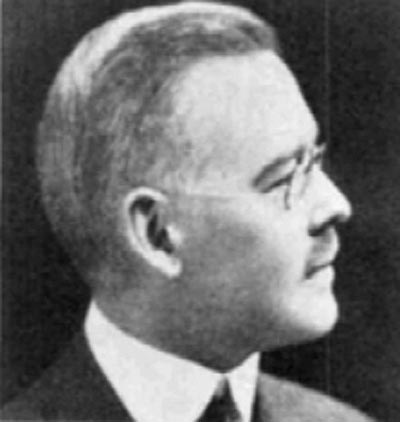
(1868-1946)
While the knowledge base of anaesthesia grows and is passed on in its literature, its traditions and its standards of practice are developed and upheld by individuals. Periodically one individual is identified with all that is best in anaesthesia; in Canada in the 1960s and 1950s it was Harold Griffith, in the 1940s it was Wesley Bourne, and in the 1930s and 1920s it was Samuel Johnston. Not for nothing was he recognized in this era as the Dean of Canadian Anaesthesia.
Johnston was born to Samuel and Elizabeth Johnston, hardy pioneers of Wellington County in Ontario, on May 12, 1868. After studying at schools in Erin and Guelph, he continued his education by taking lectures at Trinity College in Toronto while working in a law office. Neither the law then nor the ministry a little later appealed to him sufficiently, and he eventually chose medicine. He graduated from Trinity College in 1901, at the age of 32. He then interned at Toronto General Hospital, where his duties included the administration of ether and chloroform. He became adept as an anaesthetist, and in 1903 he and another ex-intern were asked to form an anaesthesia service at the hospital. In 1907 Johnston was appointed head of a new department of anaesthesia at the Toronto General. In the same year his teaching ability was recognized in his appointment as lecturer on anaesthesia at the University of Toronto. By now he was practising anaesthesia full time, and, aware of the need to learn more about what was now becoming recognized as a specialty, Johnston spent some of 1910 visiting centres in England and France. He returned to Toronto as a bona fide specialist.
Always stressing the need to keep abreast of the times, Johnston carefully built up a strong department, and by the time he retired the department at his hospital had grown to comprise seven other physicians besides himself. All of his colleagues respected Dr. Sam for his kindness and understanding, for his leadership and for his skill as an anaesthetist. For the most part he was open to the use of a variety of techniques, and his department set the standard for the practice of anaesthesia in Canada in the period between the two world wars. Johnston's concern over explosions in Toronto caused by the use of ethyl chloride, however, led him to proscribe the clinical use of cyclopropane, which his fellow Torontonians Velyicn Henderson and George Lucas had developed, and so Toronto, and Canada, lost the claim of priority to introduction of this remarkable anaesthetic. (Johnston was also leery at first of spinal anaesthesia, which, the story goes, so disturbed a patient that, when no longer paralyzed, he fled to the safety of the hospital roof, from which vantage point he hurled bricks torn from the chimney at his supposed tormentors.) For the cautious professor sound and careful anaesthesia was always the primary concern, and the statement in one of his papers that "eternal vigilance is the price of safety" served as the secret of the art of anaesthesia that Johnston instilled into his colleagues and students.
In a period when the need for professionalism in the specialty was becoming evident, Johnston's qualities and high personal standards, both as an individual and as an anaesthetist, were highly valued. He became founding president of the Canadian Society of Anaesthetists in 1920, and, outside Canada, chairman of the Section of Anaesthesia of the British Medical Association in 1926. He recognized the contributions made to Canadian anaesthesia by American anaesthetists, and his presidency of the Associated Anesthetists of the United States and Canada gave him great pleasure. These positions he held as admirably as he did others in Toronto, where he was unusual as an anaesthetist in being elected president of the Toronto Academy of Medicine, and where he was also president of the Aesculapian Society, a dinner club. Johnston was the recipient of many accolades in his lifetime, and all of them befitted his position in anaesthesia. But by Canadian anaesthetists today he should be remembered for what he did to uphold the standards of anaesthesia, and for what he did to improve the practice of anaesthesia. For as he said once, "Little do the younger anaesthetists of today know of the difficulties overcome, in blazing the trail that has led to the 'asphalt' highway on which they are travelling."
David A.E. Shephard MB FRCPC
CAN J ANAESTH 1994 / 41:4 / p353